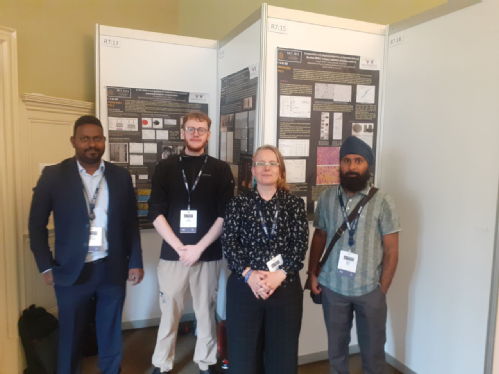All entries for Tuesday 01 August 2023
August 01, 2023
30th IEEE Symposium on Fusion Engineering (SOFE 2023) JMM's viewpoint
SOFE 2023 was from the 9-13 July and there is plenty of action to be going forward. Since then, a Larger Project Bid has been submitted on ion-beam irradiation and plans are being put into motion on a longer-term study of cWC and RSBs on irradiation and activation.
However, the main aspect of this conference is that it showcases the scale of work that is required to make fusion power a practical power source.
While much progress has been made in demonstrating how to make fusing plasma, the practicality of high-temperature superconductors (HTS) and advances in power management, there is still the fact that a fusion power plant is at least 5 seperate large facilities that must work in concert for fusion power to be successful.
This provides a counterpoint to the headlines about recent achievements such as the record-breaking campaign at the National Ignition Facility in 2021 https://www.nature.com/articles/d41586-021-02338-4 or the success of the last deuterium-tritium campaign at JET in 2021 https://www.psfc.mit.edu/events/2022/jet-dte2-campaign-preparation-execution-and-selected-highlights are certainly significant they are also misleading to the general public.
While these achievements are critically important there is much that needs to be done before a a practical powerplant can be achieved.
For instance, there needs to be a whole new industrial supply chain that differs significantly from that established for fusion power not least in that there is the need to supply deuterium and tritium alongside reliable HTS magnets. While ITER is arguably a special case in that all the contributers are building part of the reactor itself, with the UK's JET which until recently was functioning as a mini-ITER (ITER now has a W-plasma face and is no longer using Be as the front-face material), the need to establish reliable supply lines and the associated industrial infrastructure still stands.
And here is where the earliest aspects of fusion infrastructure is starting. The UK Government is well on its way to writing fusion-specific legislation, taking into account the differences in risks betwen fusion and fission power - which also impact on the industrial infrastructure. To summarise the differences in risks (and why fusion is that much harder) is that one tries to contain fission; whereas one tries to sustain fission.
There is also the Spherical Tokamak Energy Production (STEP) site in West Burton, Nottinghamshire which will be a place where all the plants needed for a fusion power plant can be assembled and tested in one place. This is a critical part in establishing fusion power and the next set of steps to practical fusion.
30th IEEE Symposium on Fusion Engineering (SOFE 2023) Gurdev's viewpoint
This was the 2nd major nuclear fusion based conference after SOFT2022 which I was attended within last one year. SOFE2023 is on the prestigious conference in this field. It was hosted UK Atomic Energy Authority at University of Oxford, UK. We had a s great learning experience from this conference. It is always good to meet and discuss with persons from both academia and industries.
Plenary and invited talks were very beneficial regarding the current status of various nuclear fusion devices and technologies. We all had poster session on Wednesday (12th July 2023). It was very interactive session. People from industries (UKAEA, Tokamak Energy, Element Six, Oxford Sigma) and academia ( Imperial College London, University of Oxford, etc) were very keen to learn and understand about our work on reacted sintered borides and cemented tungsten carbides. Similarly, we also interacted with various experts during poster sessions and after talks.
It is always good to have researchers and technologist from similar field of interest. These interactions led to some future collaboration with UKAEA and few research groups. Overall, the conference has widen the understanding and specific needs of nuclear fusion industries. It has also given us the future directions about our research based on the inputs and suggestions from both academia and industry.

 Jessica Marshall
Jessica Marshall

 Please wait - comments are loading
Please wait - comments are loading
 Loading…
Loading…